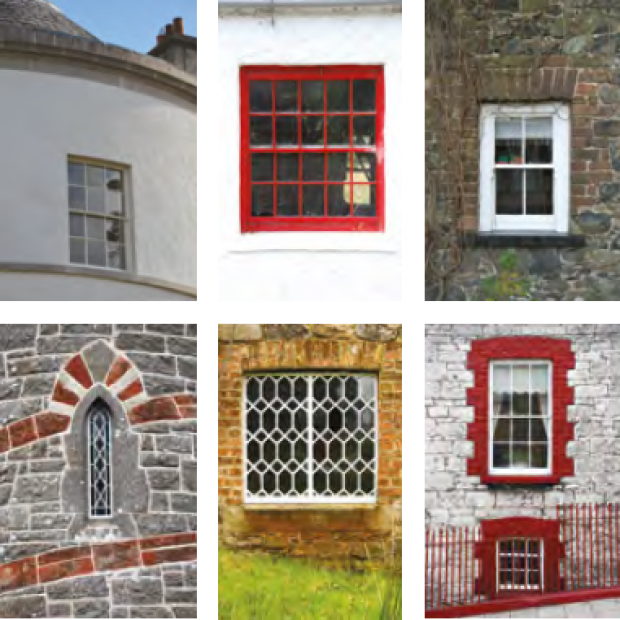Windows
It’s often said that windows are the eyes of a building. They are perhaps the single most element that, if replaced unsympathetically, can do most to alter the character of a building.
Most of the listed buildings in Northern Ireland have painted timber sliding sash windows. These may be between one and two hundred years old. With professional repair and conservation they may last for another hundred years, making repair a sound economic proposition as well as being historically vital.
Common reasons given for replacing windows are that they are draughty or rotten or that they stick or cannot be opened. All of these problems can be rectified by an experienced joiner and serious consideration should always be given to conservation rather than replacement.
Often, it is those elements of the window most exposed to rainwater which require renewal; the bottom rail of the sash or the window putty can both be repaired for example at a much lower cost than wholesale like for like replacement.
The best maintenance plan for windows is to lightly sand and paint the windows in a 4 - 5 year cycle. During this work, close inspection of each element of the window can take place, and any more vulnerable timber parts can be repaired. This frequency of a maintenance cycle might vary depending on the situation of the building. Windows facing to the south will need painted more often, for example.
There may be occasions when an original window is beyond repair. Where this occurs it should be replaced with an exact replica using the same materials. The joiner should take particular care to match the details of sash boxes, glazing bars and patterns, and any horns or shutters of the original.

Proposals to put double glazing in a listed building require listed building consent and should be agreed with the Department before you start work.
Doors
The same criteria used in dealing with windows also apply to the internal and external doors of your building.
Internal doors which need to be fire resistant can be modified, not discarded. Traditionally, external joinery was painted, with the windows and doors a different colour. Recreating historic colour schemes is easily achieved using the wide range of good quality paints now available.
Guidance on windows and doors:
Further Information
For additional technical guidance please visit the Historic Environment Toolkit.

